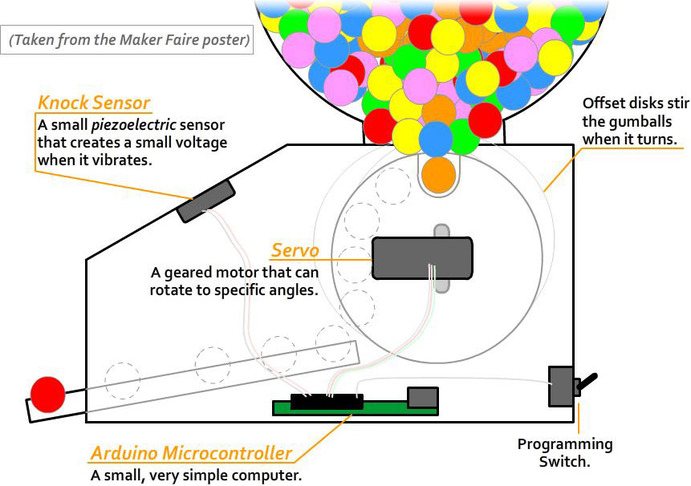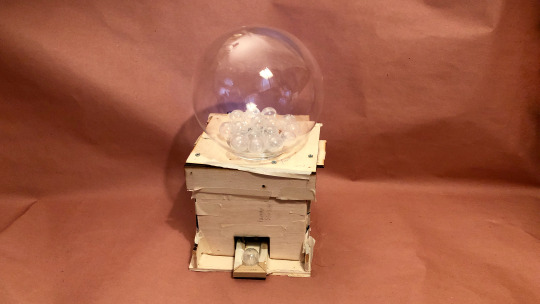But first, you have to build the gumball box and mechanism. Only two challenges:
- Your woodworking skills are nil.
- You don't have the patience to craft a fine wooden box. You just want to see if you can get something to work.
You solved one half of problem #1 by going to 100k Garages (which seems to have faded away).
100kGarages was started in 2008 by ShopBot Tools, Inc., one of the largest manufacturers of CNC digital fabrication tools, in collaboration with Ponoko, the creator of Personal Factory (software for the maker movement).
You had met the founder of ShopBot Tools, and his wife, and his loose crew of tool guys, at a series of Maker Faires. You remember that he was a former college professor who became captivated by the Maker movement. You posted the plans to the site, with a proposed payment of $50.
Within 24 hours, you receive a bid from a guy with a shop in upstate N.Y. He said he could laser cut the design in wood, and ship it, for $50. Deal.
A few hours later, you receive another inquiry about the job, from a guy in Pennsylvania. You tell him the job has already been awarded, but ask him if he would let you know what he was planning on bidding.
That way you can both learn something.
He said he was thinking $50., and was thinking of building two, and keeping one for his kids. Maybe he would make one for himself anyway.
That makes you feel like at least you are in the ballpark, in terms of the estimated cost.
You also feel that awarding jobs on 100k Garages is just different.
About a week later, a small box, about the size of a shoebox, arrives on your doorstep, densely packed with laser-cut 1/8"-thick slabs of wood.
Now you have to face the second half of Problem #1: you have the materials, yes, but how to purchase the hardware and assemble them?
You also have to adjust the box to remove the large "knock" board on the front.
It takes a few nights at Cambridge Hackspace to hack it into shape, using a variety of saws, drills, files, and a cool tool called a dremel.
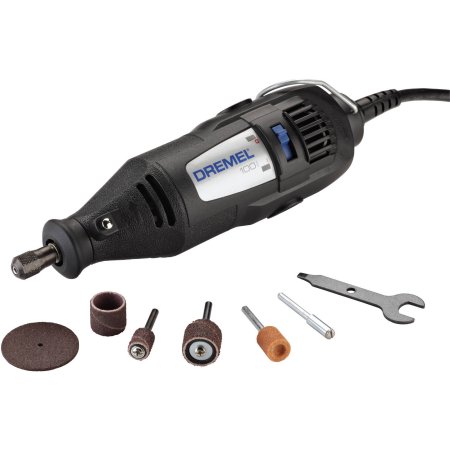
Unfortunately, the result looks like hell: a ramshackle shed of a gumball machine.
It reminds you of an album cover by one of your favorite bands: Ghost-Note.
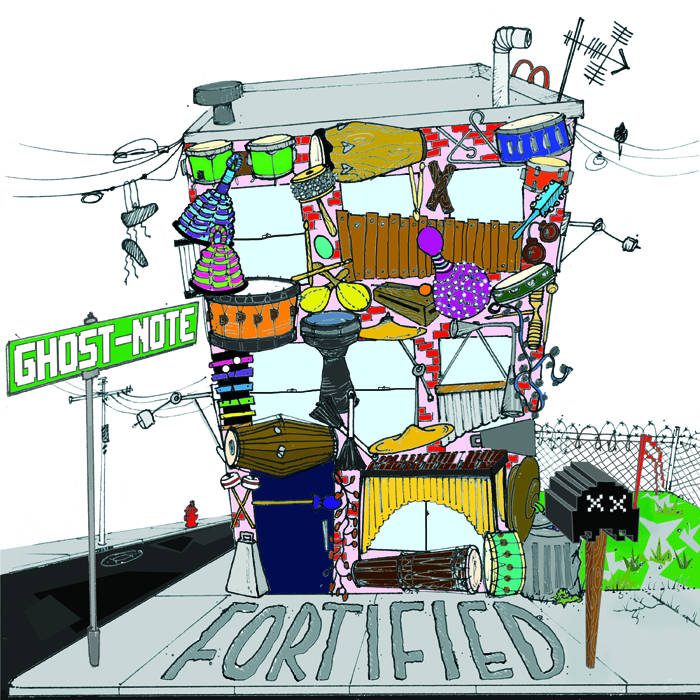
It also brings to mind PeeWee's Playhouse.
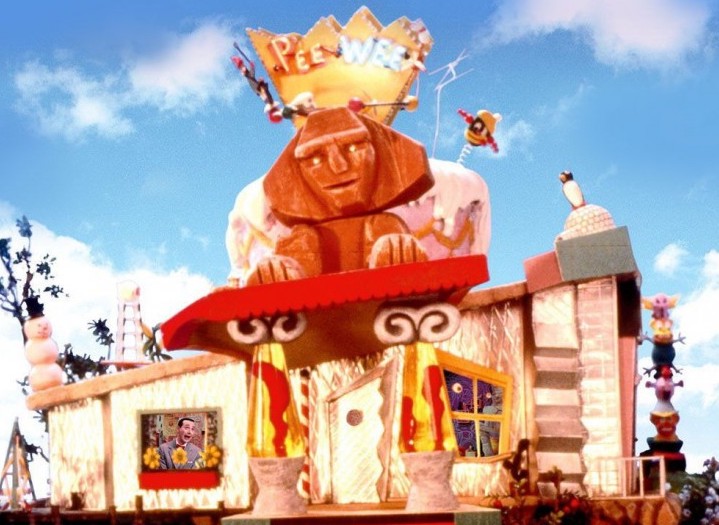
And the Stata Center at MIT, designed by Frank Gehry.
![]()
Regardless, you go ahead and hook up a servo to your crude dispensing wheel. And it dispenses a gumball, most of the time.
The mechanism is cranky, not smooth: it lurches, and grabs a gumball.
But it works.
Here's another picture of how the guts of the thing are supposed to work:
